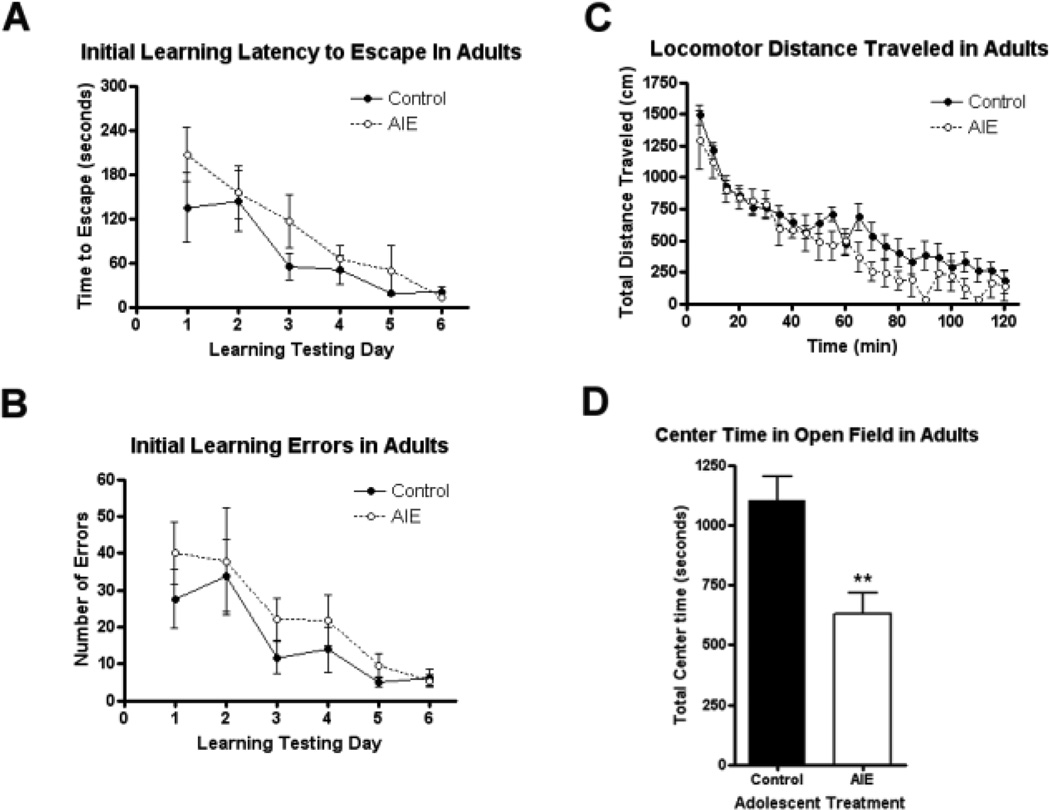Figure 2.
The effects of adolescent intermittent ethanol (AIE) on spatial learning and unconditioned anxiety-like behavior. Mice were given either water or ethanol (5g/kg, i.g.) in an intermittent fashion (2 days on − 2 days off) during adolescence (P28–37). (A–B) AIE did not alter initial spatial learning in adult mice. Spatial learning was assessed using the Barnes maze across six days in adulthood (P68–73). (A) Latency to escape. There was no significant main effect of adolescent treatment on latency to find the escape location during initial learning days (2-way ANOVA: p=0.15, F1,65=2.33). (B) Errors during initial learning. There was no significant main effect of adolescent treatment on the number of errors made during initial learning (p=0.26, F1,65=1.37). (C–D) AIE mice showed increased unconditioned anxiety-like behavior in adulthood. Total locomotor activity and time spent in the center of the open field (CTOF) were assessed in young adults (P60). (C) Total locomotor activity. AIE did not alter total locomotor distance travelled in adult mice across the two hour testing period (p=0.22, F1,299=1.70). (D) CTOF. Mice that underwent AIE binge spent less time in the center of the open field than controls (57% of controls, **p<0.005), consistent with increased unconditioned anxiety-like behavior. N= 7 Control, 8 AIE mice.

